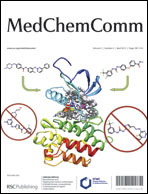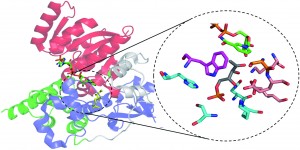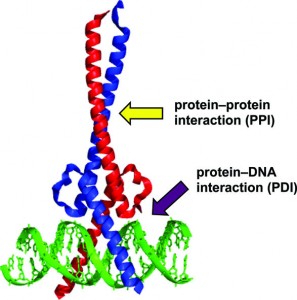 The cover of this month’s issue of MedChemComm features work from Bonnet et al. on discriminating Type II kinase inhibitors from a large number of Type I and other decoy ligands taken from the MOE kinase and DUD databases. Have a read, it’s FREE to access for 6 weeks.
The cover of this month’s issue of MedChemComm features work from Bonnet et al. on discriminating Type II kinase inhibitors from a large number of Type I and other decoy ligands taken from the MOE kinase and DUD databases. Have a read, it’s FREE to access for 6 weeks.
Targeting the inactive conformation of protein kinases: computational screening based on ligand conformation
Pascal Bonnet, Daniel Mucs and Richard A. Bryce
DOI: 10.1039/C1MD00256B
This issue also contains three reviews which you may find interesting:
Understanding and overcoming aminoglycoside resistance caused by N-6′-acetyltransferase
Kenward Vong and Karine Auclair
DOI: 10.1039/C2MD00253A
β-Lactams and β-lactones as activity-based probes in chemical biology
Thomas Böttcher and Stephan A. Sieber
DOI: 10.1039/C2MD00275B
The MEP pathway and the development of inhibitors as potential anti-infective agents
Ian Hale, Paul M. O’Neill, Neil G. Berry, Audrey Odom and Raman Sharma
DOI: 10.1039/C2MD00298A












